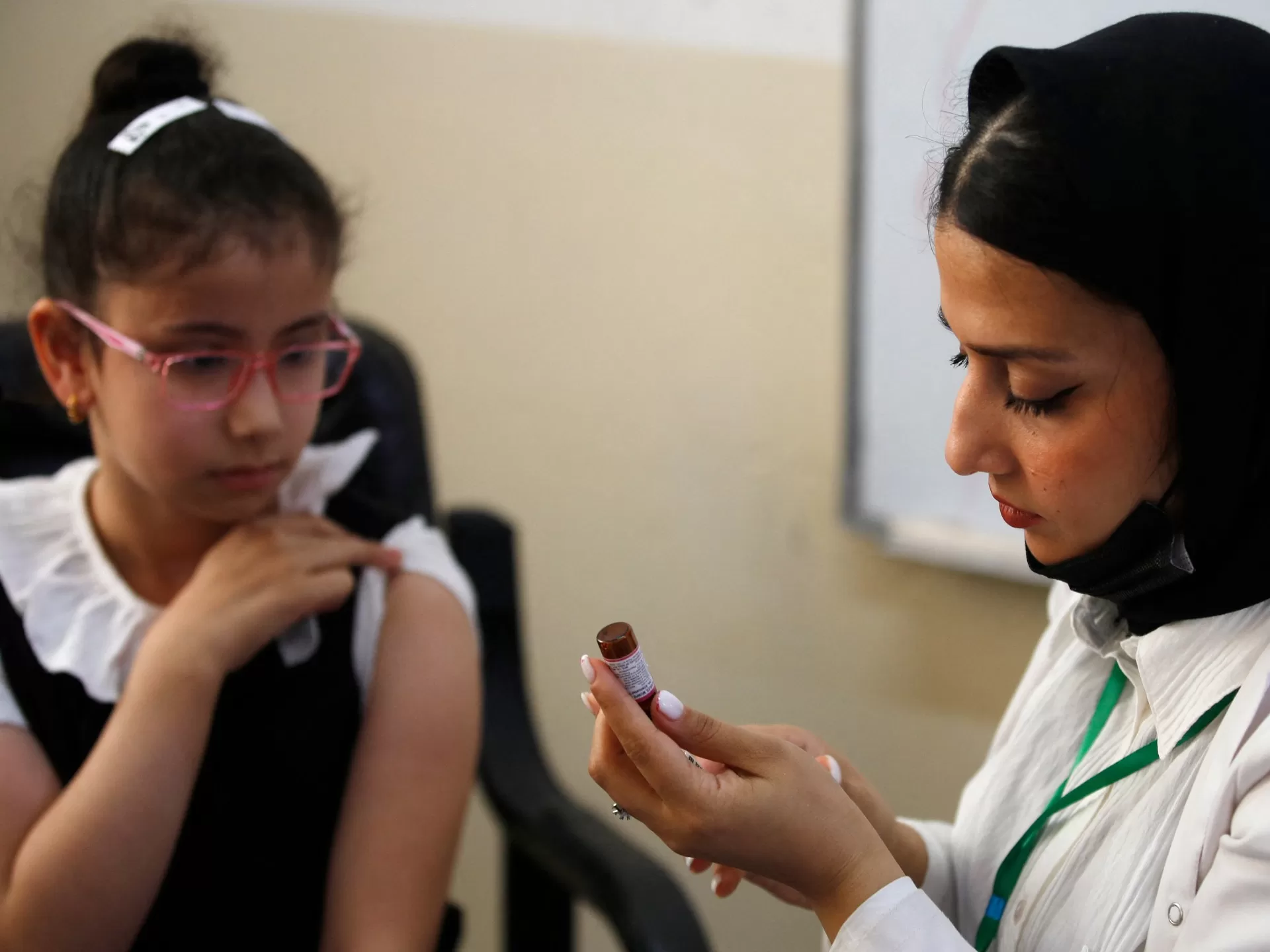The disease killed 107,500 people in 2023, most of them under the age of five.
Approximately 10.3 million people caught measles last year, a 20 percent increase compared with 2022, a new study estimates.
The jump in cases of the contagious disease reflects a drop in vaccine coverage, said the study, published by the World Health Organization and the US Centers for Disease Control and Prevention (CDC).
“The number of measles infections are rising around the globe, endangering lives and health,” CDC Director Mandy Cohen said. “The measles vaccine is our best protection against the virus, and we must continue to invest in efforts to increase access.”
Measles is one of the world’s most infectious diseases. At least 95-percent coverage with two doses of the measles/rubella vaccine is needed to prevent outbreaks.
But in 2023, only 83 percent of children worldwide received their first dose of the measles vaccine through routine health services – the same level as in 2022, but down from 86 percent before the COVID pandemic.
Only 74 percent received their second dose last year, the study showed.
“Measles vaccine has saved more lives than any other vaccine in the past 50 years,” WHO chief Tedros Adhanom Ghebreyesus said in a statement.
“To save even more lives and stop this deadly virus from harming the most vulnerable, we must invest in immunisation for every person, no matter where they live.”
‘Too many children dying’
As a result of global gaps in vaccination coverage, 57 countries experienced large and disruptive measles outbreaks in 2023, up from 36 countries a year earlier, the WHO/CDC study showed.
All regions except the Americas were affected, it said, with nearly half of all large and disruptive outbreaks occurring in the African region.
The virus, which can cause a rash, fever and flu-like symptoms but also particularly severe complications in young children, is estimated to have killed 107,500 people in 2023, most of them under the age of five.
This marks an 8-percent decrease from the previous year.
The agencies explained that the decline was mainly because the surge in cases occurred in countries and regions where children with measles were less likely to die, due to better nutritional status and access to health services.
“Far too many children are still dying from this preventable disease,” they said.
The agencies cautioned that a global target of eliminating measles as an endemic threat by 2030 was “under threat”.
By the end of last year, 82 countries had achieved or maintained measles elimination.
After Brazil this week reverified having eliminated measles, WHO’s Americas region is once again considered free of endemic measles.
All regions, with the exception of Africa, meanwhile count at least one country that has eliminated the disease.
The agencies called for urgent and targeted efforts to ensure all children are reached with two vaccine doses, especially in the African and Eastern Mediterranean regions and in fragile and conflict-affected areas.
“This requires achieving and maintaining high-performing routine immunisation programmes and delivering high-quality, high-coverage campaigns when those programmes are not yet sufficient to protect every child,” they said.
